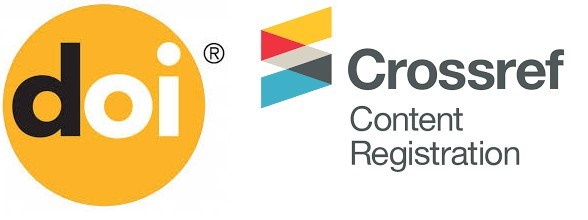Model Pembelajaran Berbasis Proyek Dengan Menggunakan Platform Raptivity Pada Mata Kuliah Bahasa Arab Di UIN SAIZU Purwokerto
DOI:
https://doi.org/10.32699/liar.v7i2.5720Keywords:
Project-based learning, raptifity, Arabic learning, platform learningAbstract
Interactive Arabic learning platforms are very diverse, one of which is the raptifity platform. This study aims to examine one of the interactive learning platforms, namely the raptivity platform in Arabic lectures with a project-based learning model conducted at UIN Prof. Saifudin Zuhri Purwokerto. The data collection method used is field research or field research. The author went directly into the field to observe the Arabic learning process and the use of the raptifity platform, interview lecturers and students as well as document activities and project results.
The results showed that Arabic learning activities using the Project Based Learning Model can be carried out in several steps. The steps are preparing project questions or assignments, designing project planning, preparing schedules as concrete steps of a project, monitoring project activities and progress, testing results and evaluating activities/experiences. Assessment can be seen from the aspect of knowledge and skills as well as from the final result in the form of a product, namely interactive displays, games or quizzes on the raptifity platform besides that it also appears on how to present project results
References
Arikunto, Suharsimi. 2013. Manajemen Penelitian. Jakarta: Rineka Cipta.
Azizah, Nurul. 2006. Metodologi Penelitian Sosial dan Pendidikan Teori Aplikasi. Jakarta: Bumi Aksara.
Efendi, Dedi, dan Zulfani Sesmiarni. 2022. “Persepsi Siswa Terhadap Pemanfaatan Gamifikasi Quizizz dalam Pembelajaran di MAN 5 Agam.” at-Tarbiyah al-Mustamirrah: Jurnal Pendidikan Islam 3 (2): 90–98. https://doi.org/10.31958/atjpi.v3i2.7626.
Febriyana, Mutia, dan Winarti Winarti. 2021. “Efektivitas Model Pembelajaran Berbasis Student Centered Learning Untuk Meningkatkan Hasil Belajar Mahasiswa Pada Mata Kuliah Microteaching.” EduTech: Jurnal Ilmu Pendidikan Dan Ilmu Sosial 7 (2): 378722. https://doi.org/10.30596/edutech.v7i2.7055.
Isnaini, Isnaini, Ambiyar Ambiyar, Ishak Aziz, dan Afriwes Afriwes. 2022. “Persepsi Mahasiswa Terhadap Penggunaan Aplikasi Kahoot Pada Mata Kuliah Neurosains Anak Usia Dini.” Aulad: Journal on Early Childhood 5 (1): 9–14. https://doi.org/10.31004/aulad.v5i1.280.
Khairani, Dewi, Muhammad Iqbal, Dede Rosyada, Zulkifli Zulkifli, dan Fitri Mintarsih. 2021. “Penerimaan Sistem Pembelajaran Bahasa Arab Dengan E-Learning Dan Gim Di Masa Pandemi COVID-19.” EDUKASI: Jurnal Penelitian Pendidikan Agama Dan Keagamaan 19 (3): 346–61. https://doi.org/10.32729/edukasi.v19i3.958.
Lutfiyatun, Eka. 2021. “Gamifikasi Bahasa Arab dengan Model Blended Learning.” Tarbiyatuna: Jurnal Pendidikan Ilmiah 6 (2): 117–28. https://doi.org/10.55187/tarjpi.v6i2.4534.
Moleong, Lexy J. 2014. Metodologi Penelitian Kualitatif. Bandung: PT Remaja Rosdakarya.
———. 2017. Metode Penelitian Kualitatif. Bandung: PT Remaja Rosdakarya Offsite.
Nazir. 2005. Metode Penelitian. Bogor: Ghalia Indonesia.
Nurul Zuriah. 2007. Metode Penelitian Sosial dan Pendidikan. Jakarta: Bumi Aksara.
Santyasa, I. Wayan. 2018. “Student Centered Learning: Alternatif Pembelajaran Inovatif Abad 21 Untuk Menyiapkan Guru Profesional.” Quantum: Seminar Nasional Fisika, Dan Pendidikan Fisika, no. 0 (Mei): xix–xxxii.
Saud, Syukur, Nur Aeni, dan Laelah Azizah. 2021. “Persepsi Mahasiswa terhadap Pembelajaran Online yang Mengintegrasikan Quizziz dan Bamboozle.” Seminar Nasional LP2M UNM, no. 0 (November). https://ojs.unm.ac.id/semnaslemlit/article/view/25354.
Shodiqoh, Mira, dan M. Mansyur. 2022. “REAKTUALISASI PROJECT BASED LEARNING MODEL DALAM PEMBELAJARAN PEMBELAJARAN BAHASA ARAB.” Tanfidziya: Journal of Arabic Education 1 (03): 144–55. https://doi.org/10.36420/tanfidziya.v1i03.134.
Sulistyo (dkk). 2010. Metode Penelitian. Jakarta: Penaku.
https://www.raptivity.com/
https://kbbi.kemdikbud.go.id/
https://www.almaany.com/id/dict/ar-id/
Downloads
Published
Issue
Section
License
Authors who publish with this journal agree to the following terms:
a. Authors retain copyright and grant the journal right of first publication with the work simultaneously licensed under a Creative Commons Attribution-ShareAlike 4.0 International License. that allows others to share the work with an acknowledgement of the work's authorship and initial publication in this journal.
b. Authors are able to enter into separate, additional contractual arrangements for the non-exclusive distribution of the journal's published version of the work (e.g., post it to an institutional repository or publish it in a book), with an acknowledgement of its initial publication in this journal.
c. Authors are permitted and encouraged to post their work online (e.g., in institutional repositories or on their website) prior to and during the submission process, as it can lead to productive exchanges, as well as earlier and greater citation of published work (See The Effect of Open Access).












